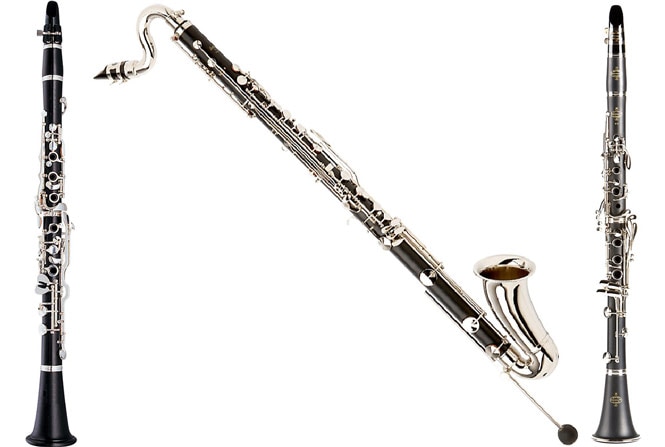Table of Contents
Clarinet anatomy
Body materials
Keys and plating
Bore styles
Reed types
Barrel types
Clarinet types
Soprano Clarinets
Bass clarinets
Harmony clarinets
Should I rent or buy?
Clarinet care
We’re here to help
Purchasing a new clarinet, whether it is your first or a step-up instrument, is a big decision with many factors to consider. Read on to learn about the critical features and components to consider which will help lead you to the clarinet that’s right for you.
The clarinet family includes a number of instrument types, distinguished by their registers and tunings. To get started, you will want to pinpoint the instrument type that is best suited to you—and to help you do that, this guide will cover the basics by exploring the common clarinet types and some considerations for each.
Clarinet anatomy

Parts of a soprano clarinet
The clarinet is composed of five major parts that make up the instrument: the mouthpiece (A), the barrel (B), the upper joint (C), the lower joint (D), and the bell (E), in that order.
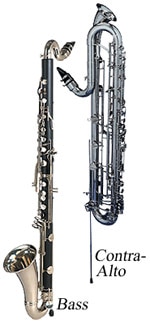
Body materials
Clarinets chiefly are made of either plastic or wood.
The type of plastic used in clarinets is specifically engineered for that use. Its benefit is that it has all the forgiving ruggedness typical of plastic while possessing certain musical qualities that allow it to sound like a clarinet. The majority of clarinets constructed from plastic are student, entry-level instruments.
The wood traditionally used for clarinet construction is grenadilla, also known as African blackwood, or mpingo wood. Due to the density of grenadilla wood, it’s preferred by advanced students and professionals for the unmistakable sound and resonance only a wood clarinet produces. The wood clarinet’s drawback is that it needs proper care to live a long life; care that some students are not disciplined enough to provide. Sufficient humidity is critical to maintaining the health of a grenadilla clarinet; extreme fluctuations in moisture can cause cracks in the body, ruining the instrument. Consistent air moisture is ideal but nearly impossible. Thankfully, there are methods of caring for wood clarinets that guarantee a long life (see below).
There is a subcategory of wood instruments known as Greenline clarinets manufactured by Buffet Crampon. They are made with 95% grenadilla wood fiber mixed with 5% carbon fiber and epoxy resin. They go through the same manufacturing process as 100% grenadilla instruments. Their advantage is that they can withstand temperature and humidity changes, require less maintenance, and don’t crack.
Keys and plating
The key work on a clarinet will be plated with either nickel or silver (and on rare occasions, gold). Nickel plate is durable, does not tarnish as easily as silver, and has a somewhat shiny appearance. Silver plate is very attractive with a warm, brilliant appearance, has a nice feel to the touch, but tarnishes easily compared to nickel plate. With proper care, silver-plated keys can remain free of tarnish and retain their beauty throughout the instrument’s life.
Bore styles
Clarinets come in several different styles and sizes of bore (the inside dimensions of the clarinet). In general, smaller bore clarinets are easier for students to play in tune. Larger bore clarinets are more flexible in pitch and are most often used by jazz players who need to bend notes and produce a big sound that projects adequately in a band setting.
Ligatures
Even though it's a small part, a clarinet's ligature has a big impact on the tone and playability of the instrument.By attaching the reed to the mouthpiece, it controls how much the reed vibrates. To help you deliver a full, rich sound, a ligature needs to let the reed vibrate freely while holding it iin place. A well-designed ligature also can help prevent wear and tear on your reeds, so you get more use out of each one.
Reed types
All clarinet reeds are not created equally. Most seasoned players will tell you that simply changing the kind of reed you use can make a major difference in your sound.
To start, there are many different brands to choose from. Rico, a U.S.-based manufacturer, and Vandoren, a French one, are two of the most-recommended brands for beginning players. Other popular makers include Rigotti, Selmer, and Legere.
Aside from choosing a brand, a clarinetist needs to consider a reed's strength and cut. Strengths range from soft to hard, typically rated on a 1-to-5 system (5 being the hardest). While a hard reed produces a fuller and thicker sound, a softer reed easier to play, making it suitable for most beginners. Additionally, reeds come in two different cuts: regular or French-file. While advanced players will appreciate the French-file's quicker response, beginners might not find them worth the slightly higher cost.
Barrel types
If you are considering upgrading your current clarinet, purchasing a new clarinet barrel can make a significant improvement in tone, intonation, and responsiveness.
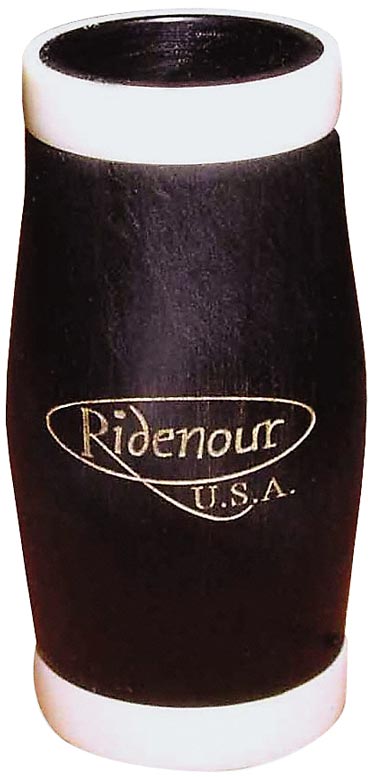
Made from pure unalloyed rubber, the Ridenour Ivorolon clarinet barrel is very durable, and features a tonal profile similar to fine, Honduran rosewood.
Clarinet tone
Generally, the ideal clarinet tone is one that is rich, dark, and focused with lots of fundamental and a pleasant mix of overtones (both lower and higher). The presence (or absence) of overtones is where personal taste comes in, but a clarinet should always produce a smooth and centered fundamental tone.
Get started by looking at the variety of barrels available through Musician’s Friend.
Clarinet types
The clarinet family encompasses a number of different instrument types, distinguished by their tunings, body styles, and sizes. Many clarinet players switch between several different models, matching a style of music—or even a particular composition—to the instrument that best suits it.
This guide will explain the different models and the kinds of playing situations where they fit in the best.
Soprano Clarinets
When you picture a clarinet, what you most likely visualize is the soprano clarinet, which has the long, thin body that most recognize upon sight. However, rather than being a single clarinet type, soprano clarinets actually make up a sub-family containing multiple clarinet models, which differ in their tunings and sound profiles.

A popular Bb model designed for beginning players, the Buffet Crampon B12 Student Clarinet uses a resin type that mimics the sound quality and appearance of Grenadilla wood.
Bb clarinets
The Bb clarinet is by far the most popular form of the instrument. It is used for all kinds of music—from Mozart to marching tunes—but it is especially prominent in jazz, swing, and Dixieland. A very large repertoire of music is written for the Bb clarinet, so the instrument is the most common choice for beginning students, and it can also be a good crossover instrument, allowing players to easily pick up the saxophone or flute at a later time.
To find a great Bb clarinet, whether it is your first or an upgrade to a finer model, take a look at Musician’s Friend’s collection.
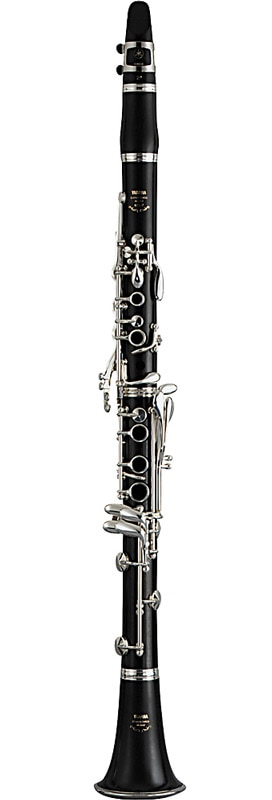
Ideal for advancing students and intermediate players, the Yamaha YCL-650 Bb clarinet is a grenadilla wood model featuring silver plating and a cylindrical bore design that makes it easy to keep in tune.
A clarinets
Although the Bb clarinet is by far the more widely used instrument, the A clarinet is very important for many players, particularly those who play classical music.
In fact, when performing classical compositions, clarinetists often switch from the Bb to the A clarinet, sometimes in a single piece of music. That's because, even though it would be possible to transpose parts written for the A clarinet so they can be played on the Bb, doing so would make the parts much more difficult to play, and the music likely wouldn’t sound as good.
Classical clarinet players typically carry a set case containing both a Bb and A model. So, especially if you are an intermediate-level clarinetist who plans to play mostly classical music, you might consider an A clarinet to supplement the more common Bb instrument.
To find a model that suits your playing level and style, browse the Musician’s Friend collection of A clarinets.
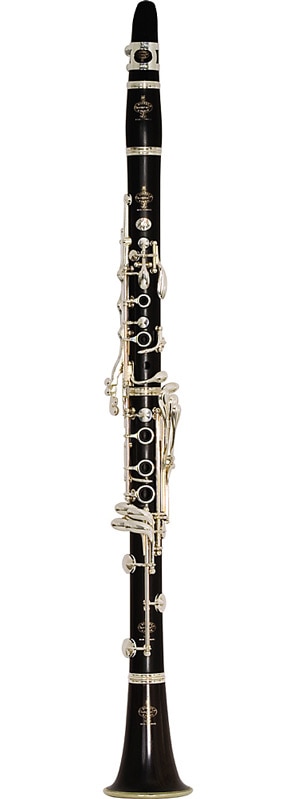
A model constructed from m’pingo wood and designed for the needs of demanding clarinetists, the Buffet Crampon Prestige R13 A is a fine choice for professional players.
Eb clarinets
While many include the Eb clarinet in the soprano sub-family, it often is referred to as a “sopranino” instrument. The Eb is employed fairly regularly by orchestras and concert bands, and it's typically used to take on the higher melodies that would be very difficult to handle on a Bb or A clarinet.
The Eb clarinet is not often recommended for beginning players. The high notes it produces typically require advanced fingerings, and it takes a keen ear to keep the instrument’s intonation spot on. With that said, the Eb clarinet can be a great choice for an experienced player looking to expand his or her skills and take on a new challenge.
You can find a great Eb clarinet in the extensive Musician’s Friends collection.
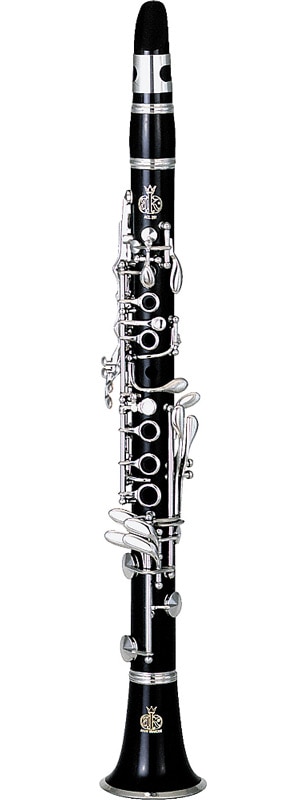
With a .512-inch bore, nickel plating, and a wooden body, the Amati ACL 261 Eb clarinet offers lots of value for the purchase price. This clarinet is great for players looking for an Eb as their second instrument.
Bass clarinets
While not as common as the soprano models, th bass clarinet does have a sizable repertoire, and it can be heard in classical, orchestral, jazz, and even pop music. Significantly larger than other clarinet types, the bass clarinet is typically positioned on the floor using its thorn (a peg at the base of the instrument) or attached to a strap or other accessory that enables the player to carry it. Unlike other clarinet types, the instrument’s bell is turned upward, giving it an appearance similar to a saxophone. Bass clarinets usually come in two variations. Some instruments will have a range to low Eb, with that lowest key on the bell, while others will have a range extending to a low C.
Tuned to Bb, one octave below the Bb soprano model, the bass clarinet produces a deep, sweet tone that sounds great solo or with an ensemble. However, since there are no commonly produced bass clarinets tuned to A, players of the instrument will sometimes have to transpose parts, which might prove slightly challenging for beginners.
Check out the range of bass clarinets available from Musician’s Friend.
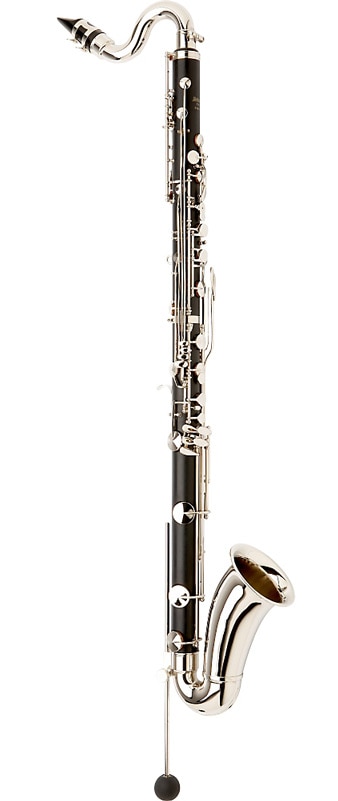
Featuring a one-piece Resonite body and nickel-plated keys, the Selmer 1430LP Bb bass clarinet is a durable, quality model that’s well suited to beginners.
Harmony clarinets
Outside of the most common clarinet types described above, there are a number of models in different tunings. Typically, these kinds of instruments are used to produce harmonies, rather than carrying melodies, hence the label “harmony clarinets.” These clarinet models often require a special order from a music store; however, Musician’s Friend has a variety of options on hand and ready to ship.
Check out Musician’s Friend selection of harmony clarinets here.
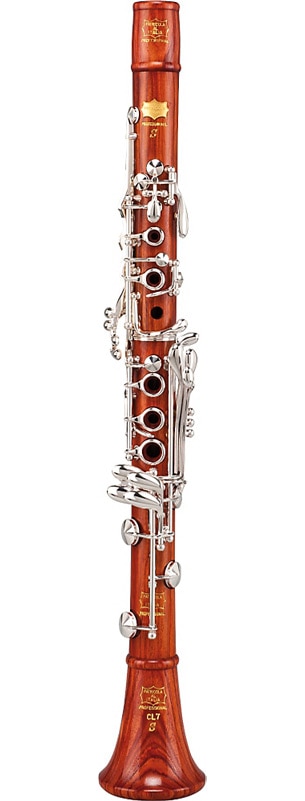
The Patricola Model CL7 C clarinet comes in either grenadilla or rosewood, allowing the player to choose the style and tone that suits them best.
Should I rent or buy?
If you’re shopping for a beginning student, you may be tempted to rent an instrument since your student’s commitment is unproven. There are some good reasons to opt for a purchase instead. These include:
- Long-term rental fees can add up quickly. A very playable student-level clarinet can often be purchased for less than the cost of a year’s rental.
- A well-chosen student instrument that is well cared for will retain its value and usually return a substantial part of its purchase price when sold used or traded in for an intermediate clarinet.
- Rental instruments may be a bit worse for wear with nicks, dents, and scratches. You’re also liable for any damage on a rented clarinet.
Clarinet care
A new clarinet, or one that has been stored for some time, needs to be acclimated to avoid cracking. There are two general rules of thumb to follow in taking care of your grenadilla clarinet.
- Rule #1: Do not keep your wood instrument anywhere you would not keep a baby. You would not leave a baby out in the cold or in your car on a hot day, so don’t do either with your wood clarinet.
- Rule #2: When not playing, always store your instrument in its case.
Dry climate care
If you live in a dry climate, your clarinet will require more care since moisture is pulled from the wood quickly, causing problems. In this case, using a humidifier will help prevent the wood from drying too rapidly and cracking.
Wet climate care
While keeping your clarinet humidified may be important, too much moisture can also be bad for the instrument. If you will be playing outside in wet conditions, it's particularly important to apply oil to the bore to keep it clean. Additionally, any time you play the clarinet, you will want to clean it and remove any moisture before placing it back in its case. Not only will dampness make the clarinet's wood brittle and prone to cracking, but it also can cause corrosion and mold growth.
Breaking in a wooden clarinet
Grenadilla clarinets also have to be broken in before you can play them for extended periods.
During the first week, play your clarinet no longer than 15 minutes per day, and swab the bore carefully afterward to remove moisture. In the second week, extend playing time to 30 minutes and follow up with swabbing the bore. For the third week, extend playing time to 45 minutes and swab the bore. During the fourth week, you can push your playing time up to one hour and remove moisture from the bore afterwards by swabbing. After this regimen, if you have followed it closely, your clarinet should be broken in. Of course, you need to keep up regular swabbing every time you play.
We’re here to help
After reading this guide, if you’re not sure which clarinet is best for you, or if you have any questions related to your decision, call a Musician’s Friend Gear Head at 877-880-5907. We’ll help you find a clarinet you'll love playing!





































































































































